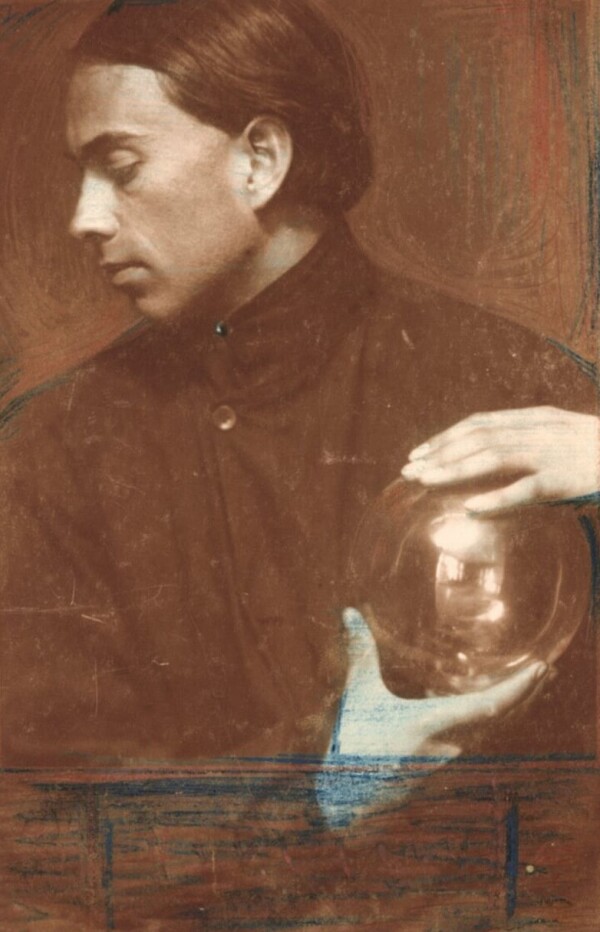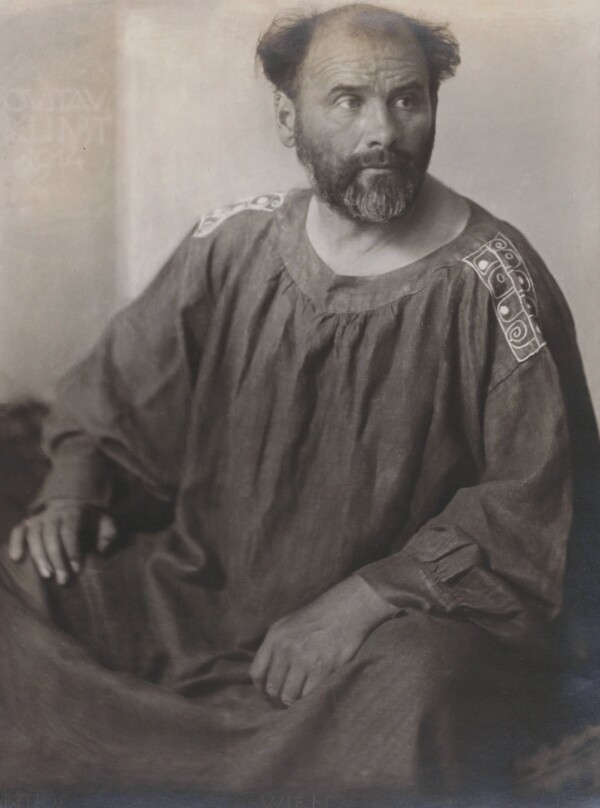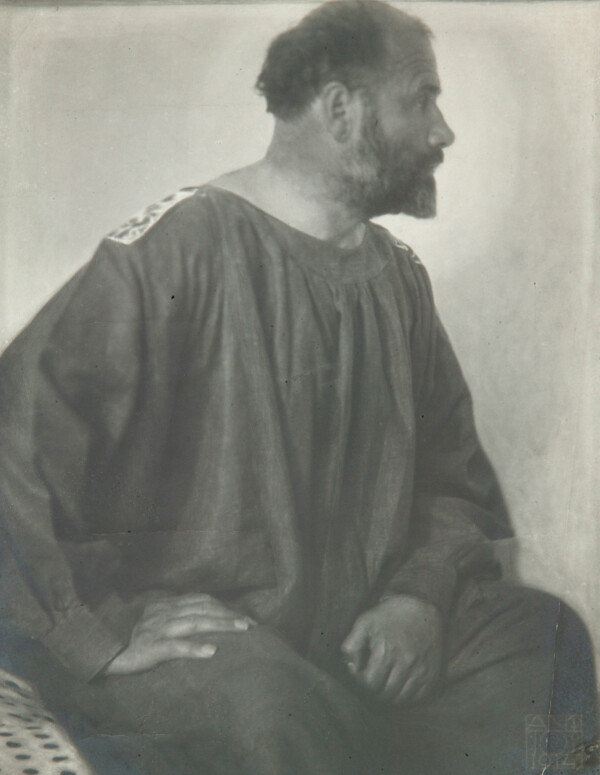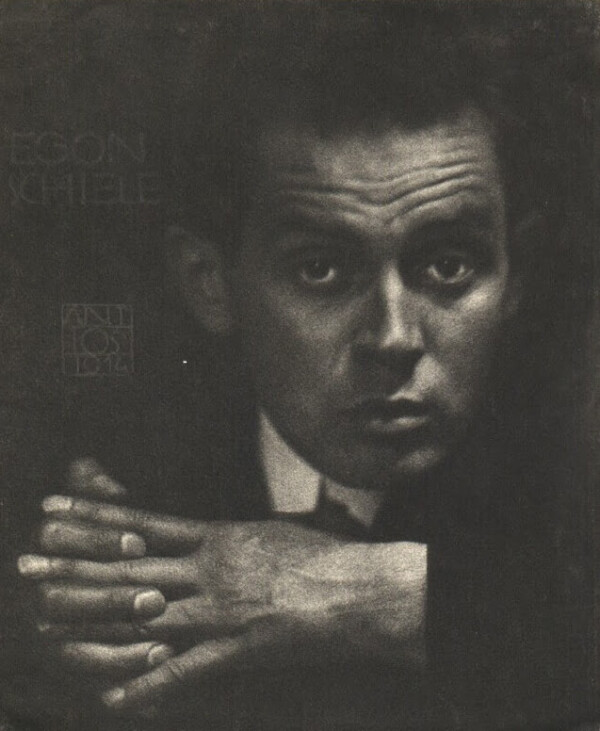Anton Josef Trčka

Anton Josef Trčka: Self-portrait with glass ball, around 1916
© The ALBERTINA Museum, Vienna

Anton Trčka: Gustav Klimt, 1914, Klimt Foundation
© Klimt Foundation, Vienna

Anton Trčka: Gustav Klimt, 1914, Sammlung Stefan Asenbaum
© Stefan Asenbaum Collection

Egon Schiele photographed by Anton Josef Trčka, 1914
© The ALBERTINA Museum, Vienna
The fine art photographer Anton Josef “Antios” Trčka made innovative and extraordinary portraits by which he managed to stand out from his colleagues. The majority of his oeuvre was destroyed during air raids in Vienna in 1944. He is best known to posterity for his series of portraits of Gustav Klimt and Egon Schiele.
Trčka’s Career
Anton Josef “Antios” Trčka was born in Vienna on 7 September 1893. His family originally came from Southern Moravia. His roots and Vienna as a cultural melting pot shaped Trčka’s approach to art throughout his life. He was both a photographer and writer and besides also tried his hand at painting.
Having completed compulsory schooling, he began his training under Karel Novák at the Imperial-Royal Institute for Graphic Arts Education and Research (nicknamed “Graphische”) in 1911. Trčka’s well-known fellow students were Trude Fleischmann and Rudolf Koppitz. When still a student, he signed his works “Antios,” a pseudonym composed of the initial letters of his first and middle names.
Aside from experimenting with the latest photographic techniques and exploring the art of Symbolism and Pictorialism, Trčka became intensively involved with the programmatic journal Ver Sacrum, the mouthpiece of the Vienna Secession, and studied Wiener Werkstätte sample prints. The inspiration gained was essential for his metamorphosis into a modern fine-art photographer.
Expression in Portraiture. Trčka’s Visual Language
Trčka looked at photography not only from its representational function, but often drew on the negative with a brush. These manual interferences comprised inscriptions of the sitters’ names and adding symbolic accessories, as can be seen in a self-portrait taken around 1925. He thus created a pictorial language that was, on the one hand, innovative and original in the field of modern photography and, at the same time, took inspiration from late medieval portraiture. These elements went hand in hand with expressive poses, in which particularly gestures played a vital role. Trčka’s portraits thus distinguished him from the photographers of his age. Even though he was not affiliated with an artists’ association and did not exhibit on a regular basis, a circle of open-minded creatives including Richard Teschner, Peter Altenberg, and the dancer Ellinor Tordis appreciated his expressive portraits and recommended him to potential clients.
“I was a student of Egon Schiele and Gustav Klimt.”
Trčka’s iconic portrait series of Klimt and Schiele date from 1914. The contact with Klimt was probably brought about through a letter of recommendation from Josef Maria Eder, the founding director of the “Graphische.” “Antios” captured Klimt in exalted poses and from different perspectives, depicting him wearing a suit or one of his famous indigo painter’s smocks. These portraits visualize Klimt’s role as a prince of painters and grand seigneur of Austrian art. Trčka accentuated the significance of these artistic photographs by inscribing Klimt’s name and adding his own signature. Moreover, in some photographs Trčka’s square monogram in the Secessionist style appears in the lower right corner.
Apart from this commission, which left a lasting impression on Trčka, he also seemed to have studied the Jugendstil master’s paintings. The pen and ink drawings and watercolors entitled Innocent Chimes (1914/15, private collection) reveal borrowings from Klimt’s landscape paintings through their square format, brushwork, and composition, the latter of which does without perspective.
Schiele and Trčka came into contact through the agency of the painter Robin Christian Andersen, whom the latter had photographed in 1912. Schiele’s photographed portraits are characterized by a deliberate mise-en-scène, cropping, and poses reminiscent of contemporary dance, with emphasis placed on the hands. Compared to the portraits of the more established Klimt, Trčka stages Schiele as the epitome of an eccentric. In addition, one of the photographs displays a special documentary character, as it shows Schiele interacting with his unfinished and now lost painting Encounter (Self-Portrait with Saint) (1913, whereabouts unknown).
The style of Klimt’s and Schiele’s series of portraits was of essential importance for the work of “Antios.” In a draft for his curriculum vitae from around 1930, he concluded:
“I was a student of Egon Schiele and Gustav Klimt.”
Trčka’s Later Career
In the late summer of 1916, Trčka was drafted into the army. Shortly thereafter he met his future wife, Clara Schlesinger. This not only brought about an improvement of his financial situation, but Schlesinger also strengthened “Antios’s” interest in the anthroposophical movement and introduced him to the ideas of Rudolf Steiner. After World War I, Trčka worked as a photographer for the Military Photographic Department of the Ministry of Public Works in Prague, but continued to live in Vienna. During the 1920s, “Antios” primarily concentrated on painting. Staying in the native country of his parents, he found inspiration in Czech folklore and participated in two exhibitions in Prague and Vienna. He then worked in the studio of Hella Katz, one of the most important photographers of the interwar years. In 1926, Trčka founded the Ring Workshops for Arts and Crafts and Fine-Art Photography, and in 1930 took his master’s examination as a photographer. After a short while, however, he gave up his métier almost completely, trying his hand at poetry and organizing anthroposophical readings.
Anton Josef “Antios” Trčka died in Vienna on 17 March 1940. He found his final resting place at Vienna’s Central Cemetery. Almost his entire estate was destroyed during air raids in Vienna in 1944.
Literature and sources
- Österreichisches Biographisches Lexikon. Anton Josef Trčka. www.biographien.ac.at/oebl/oebl_T/Trcka_Anton-Josef_1893_1940.xml (04/01/2020).
- Monika Faber: Anton Josef Trčka: Menschenbilder in fließenden Rhythmen – Die Fotografien des ANTIOS (1893–1949), in: Carsten Ahrens, Cark Haenstein, Rudolf Kicken (Hg.): Die Künstlichkeit des Wirklichen. Fotografierte Körper. Anton Josef Trčka, Edward Weston, Helmut Newton, Ausst.-Kat., Kestner Company (Hanover), 14.03.1998–24.05.1998, Zurich - Berlin - New York 1998, S. 17-26.
- Monika Faber: Anton Josef Trčka. 1893–1940, in: Monika Faber (Hg.): Anton Josef Trčka. 1983–1940, Ausst.-Kat., State Art Gallery Baden-Baden (Baden-Baden), 00.00.1999; Picture archive of the Austrian National Library (Vienna), 00.00.1999; Arp Museum Bahnhof Rolandseck (Remagen), 00.00.1999; Rupertinum (Salzburg), 01.07.1999–31.07.1999, Vienna 1999, S. 14-109.
- Österreichisches Biographisches Lexikon. Trčka, Anton Josef. www.biographien.ac.at/oebl/oebl_T/Trcka_Anton-Josef_1893_1940.xml (07/19/2022).
- Ann Thomas: Witkiewicz, Trčka and Kesting: Pioneers in modernist portraiture, Online 2005.
- Albertina (Hg.): Egon Schiele, Ausst.-Kat., Albertina (Vienna), 22.02.2017–18.06.2017, Munich 2017.

